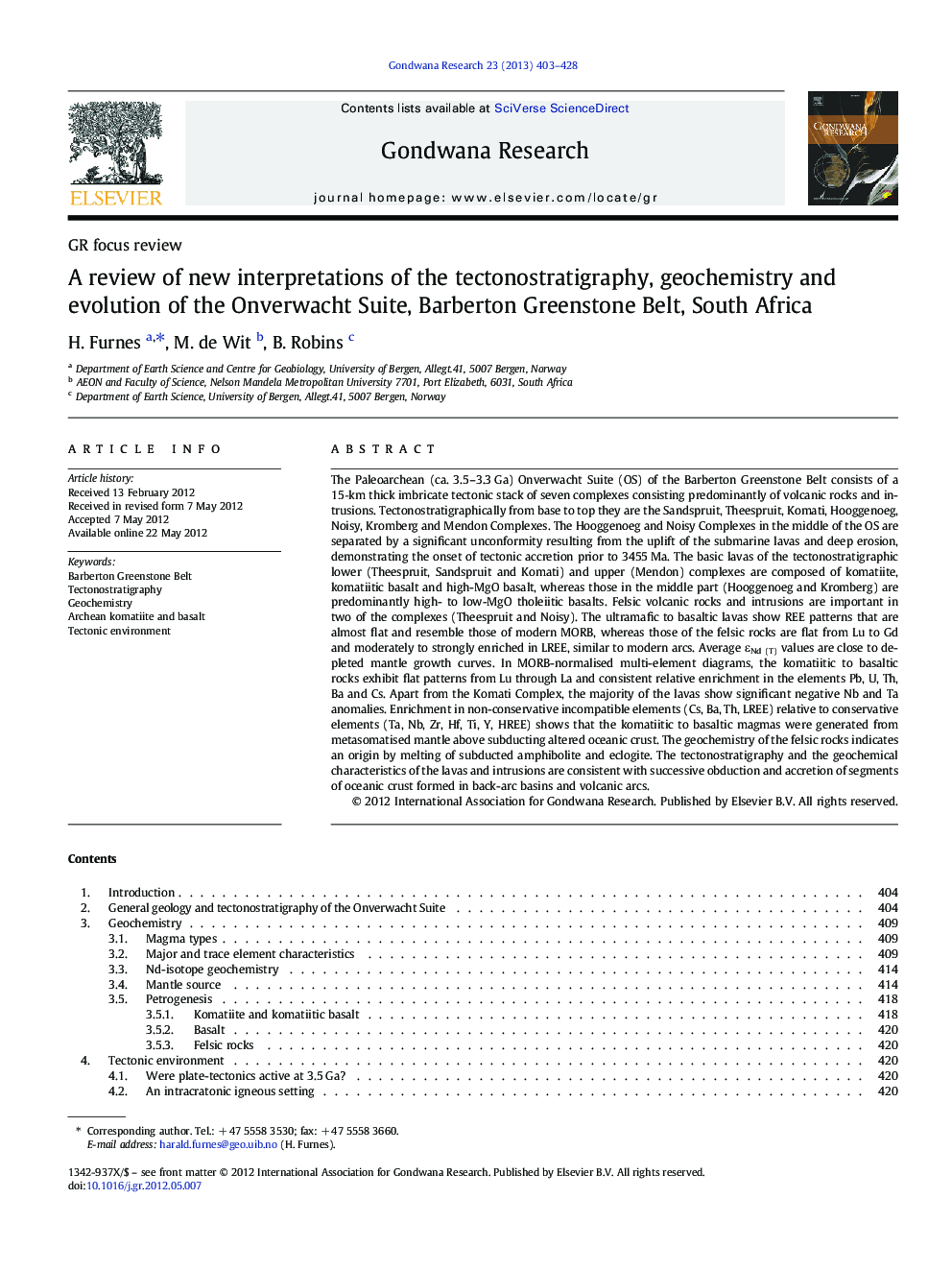| Article ID | Journal | Published Year | Pages | File Type |
|---|---|---|---|---|
| 4727445 | Gondwana Research | 2013 | 26 Pages |
The Paleoarchean (ca. 3.5–3.3 Ga) Onverwacht Suite (OS) of the Barberton Greenstone Belt consists of a 15‐km thick imbricate tectonic stack of seven complexes consisting predominantly of volcanic rocks and intrusions. Tectonostratigraphically from base to top they are the Sandspruit, Theespruit, Komati, Hooggenoeg, Noisy, Kromberg and Mendon Complexes. The Hooggenoeg and Noisy Complexes in the middle of the OS are separated by a significant unconformity resulting from the uplift of the submarine lavas and deep erosion, demonstrating the onset of tectonic accretion prior to 3455 Ma. The basic lavas of the tectonostratigraphic lower (Theespruit, Sandspruit and Komati) and upper (Mendon) complexes are composed of komatiite, komatiitic basalt and high-MgO basalt, whereas those in the middle part (Hooggenoeg and Kromberg) are predominantly high- to low-MgO tholeiitic basalts. Felsic volcanic rocks and intrusions are important in two of the complexes (Theespruit and Noisy). The ultramafic to basaltic lavas show REE patterns that are almost flat and resemble those of modern MORB, whereas those of the felsic rocks are flat from Lu to Gd and moderately to strongly enriched in LREE, similar to modern arcs. Average εNd (T) values are close to depleted mantle growth curves. In MORB-normalised multi-element diagrams, the komatiitic to basaltic rocks exhibit flat patterns from Lu through La and consistent relative enrichment in the elements Pb, U, Th, Ba and Cs. Apart from the Komati Complex, the majority of the lavas show significant negative Nb and Ta anomalies. Enrichment in non-conservative incompatible elements (Cs, Ba, Th, LREE) relative to conservative elements (Ta, Nb, Zr, Hf, Ti, Y, HREE) shows that the komatiitic to basaltic magmas were generated from metasomatised mantle above subducting altered oceanic crust. The geochemistry of the felsic rocks indicates an origin by melting of subducted amphibolite and eclogite. The tectonostratigraphy and the geochemical characteristics of the lavas and intrusions are consistent with successive obduction and accretion of segments of oceanic crust formed in back-arc basins and volcanic arcs.
Graphical abstractFigure optionsDownload full-size imageDownload as PowerPoint slideHighlights► The Onverwacht Suite (OS) contains the magmatic rocks of the Paleoarchean Barberton Greenstone Belt, South Africa. ► The OS consists of a 15 km thick imbricate tectonic stack. ► The magmatic rocks of the OS range from komatiites, basalts to dacites. ► All the magmatic rocks of the OS show subduction signatures. ► The magmatic rocks of the OS developed in back-arc basins and volcanic arcs.
